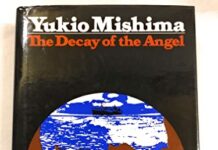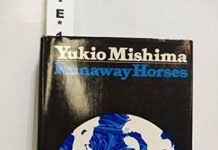
Ebook Info
- Published: 2011
- Number of pages: 192 pages
- Format: PDF
- File Size: 1.98 MB
- Authors: Yukio Mishima
Description
Recognized throughout the world for his brilliance as a novelist and playwright, Yukio Mishima is also noted as a master of the short story in his native Japan, where the form is practiced as a major art. Nine of Yukio Mishima’s finest stories were selected by Mishima himself for translation in this book; they represent his extraordinary ability to depict a wide variety of human beings in moments of significance. Often his characters are sophisticated modern Japanese who turn out to be not so liberated from the past as they had thought.
User’s Reviews
Editorial Reviews: Review “In Death in Midsummer Yukio Mishima unfolds to English-language readers a range of his talents as he explores a variety of pathways into the complex Japanese personality. He can be funny, even hilarious, but he is also capable of plunging into the dark psychic depths achieved by Hitchcock.” ― Robert Trumbull, The New York Times Book Review”When I read a writer such as Mishima I’m not only experiencing a narrative but also dueling with another darkness behind the words. A seemingly empty house haunted with invisible presences obtusely felt, and the tingle of awareness that someone else is in it, watching.” ― Benjamin Hale, n+1″Genius…Yukio Mishima is one of the great writers of the 20th-century. An extraordinary mind.” ― The Los Angeles Times From the Back Cover Recognized throughout the world for his brilliance as a novelist and playwright, Yokio Mishima is also noted as a master of the short story in his native Japan, where the form is practiced as a major art. About the Author Yukio Mishima (1925-1970) completed his first novel the year he entered the University of Tokyo and his last novel the day of his death. He is the author of numerous novels, stories, plays, and essays. Gore Vidal once said of him: “I only regret we never met, for friends found him a good companion, a fine drinking partner, and fun to cruise with.” Mishima committed suicide by ceremonial seppuku after a failed coup d’e´tat intended to restore pre-WWII power to the emperor of Japan. Read more
Reviews from Amazon users which were colected at the time this book was published on the website:
⭐Mishima put together a beautiful collection of short stories that illustrate Japan’s cultural struggle with finding balance between modernization and tradition. Beautifully written. Highly recommend!
⭐My months-long hiatus from my Mishima immersion, well-rewarded by reading The Three-Body Problem, is happily at an end. It’s wonderful to re-encounter the voice and sensibility of this master, especially in never before encountered short form: Death in Midsummer, an early (1953, translated for New Directions in 1966) volume of 10 stories steeped in love, loss, honor, horror, absurdity, ambiguity and nature in all its narrative colour as only Mishima can achieve.The eponymously-titled opening work traces the emotional resonance of a triply-tragic seaside sojourn. Three MIllion Yen follows a young couple on their trip through a department store and adjacent funhouse ride, with a reveal as to their livelihood completely out of left field. Thermos Bottles is a subtle dance of betrayal and childhood-instilled fear of abandonment. The Priest of Shiga Temple and His Love is a hallucinatory tale of obsession: the desire for love versus the attainment of enlightenment. The Seven Bridges follows superstitious geishas seeking the answers to their prayers, if on;y they can traverse the seven bridges without having to speak. Patriotism, a visceral depiction of honor-bound Seppuku by a soldier and his wife. Dojij is in fact a play, one of many Mishima wrote. The title comes from an existing play in the Noh tradition. This was the first time I’d encountered a Mishima dramatic work. Words meant to be intoned aloud attain a quantum level of new evocative power I would have presumed of Mishima; also a hilarious tale of a magic wardrobe. An Onnagata is a male actor known for female roles. This story is a behind-the-scenes tableau of projected and implicit sexuality, of ritualized personae. The Pearl is another dinner party farce gone terribly wrong (who knew Mishima could be so dark and so funny?). Swaddling Clothes is an incisive study of abandonment and class struggle.A blessed reunion.
⭐Death in Midsummer and Other Stories comes with ten stories that are all great for the most part. One of them is a play with a Kabuki theme. The prose is neither too heavy nor too crisp. It reminded me of the pocketbooks translation of, “Spring Snow” which I also enjoyed. Although I enjoyed some stories more than others they were all worth reading and especially so for any fan of Mishima’s other works. The set opens up with, “Death in Midsummer” which is a story about… death/loss (surprise surprise). One story that stood out was, “Patriotism.” I won’t give anything away except that it was one of the more terrifying short stories I’ve read. It was really brutal but as I’ve said earlier- worth reading. Another favorite story was, “The Priest of Shiga Temple and His Love.” Again, I won’t give anything away but the tone of that story did a lot as it came off as religious (and wasn’t preachy). So these stories were the highlights for me but again, they were all good and make this set a worhwhile purchase for any Mishima fan or those looking for an introduction to the author… since there is variety in setting and direction for these stories.
⭐Didn’t cover than what was advertised and the book was very much used but still great to own.
⭐I bought this collection because I wanted to read “The Pearl,” which had been recommended to me as the best short story to read for understanding literary voice perspective (true! in my humble opinion). But I enjoyed the entire collection. It is varied–often dark, as you would expect from Mishima, but occasionally whimsical. My favorites were “The Pearl,” which I have now read front to back several times, and “Patriotism,” which I found utterly chilling.
⭐Mishima writes wonderfully, his themes are so close to the human soul that sometimes they are beautifully painful words to read, but oh if it’s worth to read each and every one of his stories in this collection. You’ll be a more insightful, soulful human after you are done with this collection of short stories. Inspiring classic literature
⭐Read in college.
⭐This is the first book by Mishima I’ve read, and I plan to read more.
⭐Yukio Mishima, der hochproduktive und hochbegabte Schriftsteller, dessen Bücher die Japanische Literaturtradition erstmalig in vollem Umfang der westlichen Welt verfügbar machten, und dessen Leben ein so spektakuläres Ende nahm, ist in Deutschland bei weitem noch nicht so umfangreich übersetzt, wie ihm englischsprachigen Raum; es ist schade, was einem hier für ein Lesegenuss vorenthalten bleibt, denn die hier vertretenen Geschichten sind ohne Ausnahme Meisterwerke von sprachlicher Ökonomie einerseits und emotionaler Intensität andererseits. Mishima war sein Leben lang gefangen zwischen moderner literarischer Tradition auf der einen, und seinem Jahrtausende alten Japanischen Kulturerbe auf der anderen Seite, und seiner Kurzprosa ist diese Ambivalenz deutlich anzumerken. Diese Geschichten sind nach westlicher Tradition aufgebaut, behalten jedoch immer einen Beigeschmack ursprünglicher Exotik, was sie zu einem sehr reizvollen Leserlebnis macht. Es geht um Menschen, deren jahrelang versteckter Schandfleck plötzlich an die Oberfläche tritt, die von lange Vergessenen Erlebnissen heimgesucht werden, oder deren geordnetes Leben durch einen Schicksalsschlag aus den Fugen gerät:Die Geburtstagsfeier einer älteren Dame wird zu einer giftspeienden Hexenjagd, als ein Schmuckstück verschwindet, und sich jahrelange Freundinnen plötzlich gegeneinander wenden (“The Pearl”), ein jung verheiratetes Ehepaar muss sich an zweifelhafte Methoden gewöhnen, um ihren Traum eines bürgerlichen Lebens finanzieren zu können (“Three Million Yen”), die Affäre eines verheirateten Geschäftsreisenden in San Francisco verfolgt ihn auch nach seiner Rückkehr zu Frau und Kind (“Thermos Bottles”), das asketische Leben eines älteren buddhistischen Mönches endet mit einem Schlag, als er eine schöne Frau erblickt, deren Bild danach jegliche Meditation und innere Einkehr unmöglich macht (“The High Priest and his Love”), und die brillante Titelgebende Geschichte beschreibt den schrittweisen Zerfall unangetasteten Eheglücks, nachdem zwei der drei Kinder bei einem Badeurlaub ums Leben kommen.Eingefügt ist auch eines von Mishimas Kurzdramen, die er für das No-Theater schrieb, das aber als reine Textlektüre nur erahnen lässt, was bei einer Inszenierung möglich wäre.Acht verschiedene Übersetzer haben sich hier an Mishimas angeblich sehr reichem Stil versucht, und man erhält eine ungefähre Idee von den Möglichkeiten dieses Autors. Bis man diese Edition mit einer deutschen Fassung vergleichen kann, wird wohl noch etwas Zeit vergehen – ein Verlust ist das keinesfalls.
⭐
Keywords
Free Download Death in Midsummer: And Other Stories (New Directions Paperbook) in PDF format
Death in Midsummer: And Other Stories (New Directions Paperbook) PDF Free Download
Download Death in Midsummer: And Other Stories (New Directions Paperbook) 2011 PDF Free
Death in Midsummer: And Other Stories (New Directions Paperbook) 2011 PDF Free Download
Download Death in Midsummer: And Other Stories (New Directions Paperbook) PDF
Free Download Ebook Death in Midsummer: And Other Stories (New Directions Paperbook)




